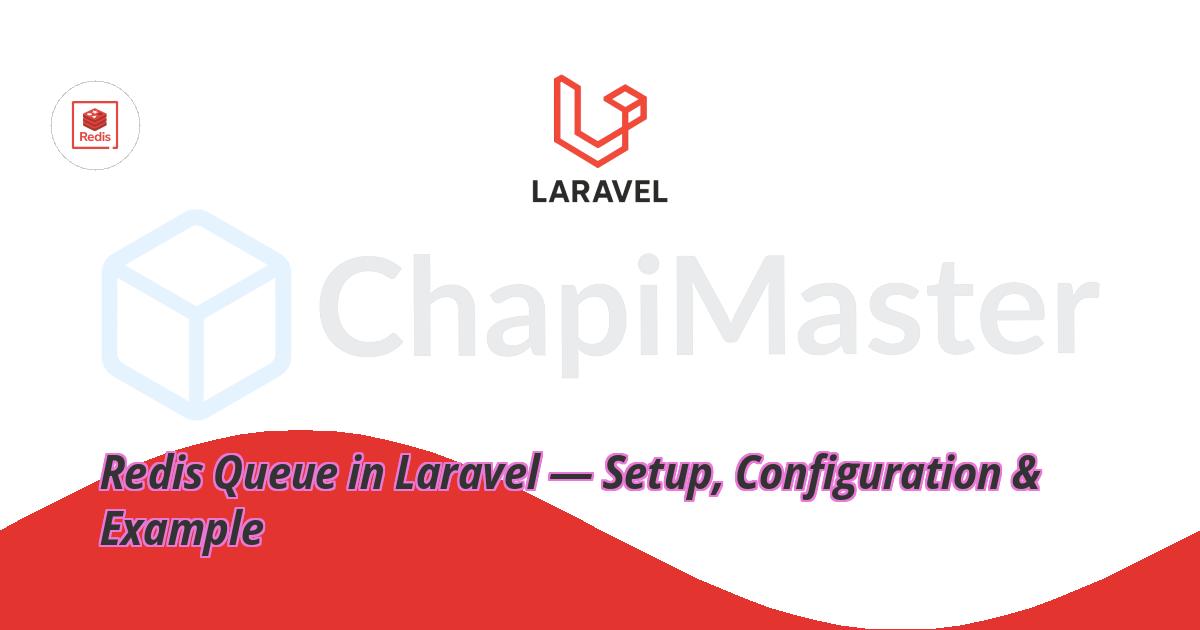Redis is a fast in-memory data store that integrates perfectly with Laravel queues. Using Redis as your queue driver makes job processing faster and more scalable compared to database queues.
🚀 Laravel’s queue system allows you to defer time-consuming tasks like sending emails or processing uploads — Redis helps you handle them in real time.
1. Install Predis for Laravel
Laravel supports two Redis clients — phpredis (extension) and predis (package). We’ll use predis since it’s easier to install and works without PHP extensions.
composer require predis/predis
2. Configure Redis in Laravel
Open your .env file and set the following values:
REDIS_CLIENT=predis
REDIS_HOST=127.0.0.1
REDIS_PASSWORD=null
REDIS_PORT=6379
Now update your config/database.php file to use the environment variable:
'client' => env('REDIS_CLIENT', 'predis'),
Also add the Redis alias in config/app.php under aliases:
'Redis' => Illuminate\Support\Facades\Redis::class,
3. Configure Queue Connection
Laravel allows multiple queue drivers — database, Redis, SQS, Beanstalk, etc. To use Redis, set the following in your .env:
Once configured, Laravel will automatically push and pull jobs from your Redis server.
4. Create a Job
Use the artisan command to create a new queued job:
php artisan make:job SendMail
The generated job class implements the ShouldQueue interface by default.
Example:
namespace App\Jobs;
use Illuminate\Bus\Queueable;
use Illuminate\Contracts\Queue\ShouldQueue;
use Illuminate\Foundation\Bus\Dispatchable;
use Illuminate\Queue\InteractsWithQueue;
use Illuminate\Queue\SerializesModels;
class SendMail implements ShouldQueue
{
use Dispatchable, InteractsWithQueue, Queueable, SerializesModels;
public function handle()
{
\Log::info('Email sent successfully!');
}
}
5. Dispatching the Job
You can now dispatch your queued job anywhere in your app — controller, service, or command:
dispatch(new SendMail());
When dispatched, the job will be pushed into your Redis queue.
6. Processing the Queue
Run the Laravel queue worker to start processing jobs:
⚙️ The worker listens for new jobs from Redis and executes them instantly.
7. Testing Redis Commands
You can still interact with Redis directly using Laravel’s Redis facade:
Redis::set('foo', 'bar');
Redis::get('foo');
8. Verify Queue Jobs in Redis
You can open redis-cli and check your queue data:
KEYS *
LRANGE queues:default 0 -1
9. Advantages of Redis Queue
- ⚡ Extremely fast in-memory job processing
- 💾 Reliable persistence options
- 📊 Easy monitoring with RedisInsight or Horizon
- 📡 Great for microservices and event-driven systems
Redis Queue is an essential upgrade for any production Laravel app. It handles background jobs efficiently and scales perfectly with modern workloads.


